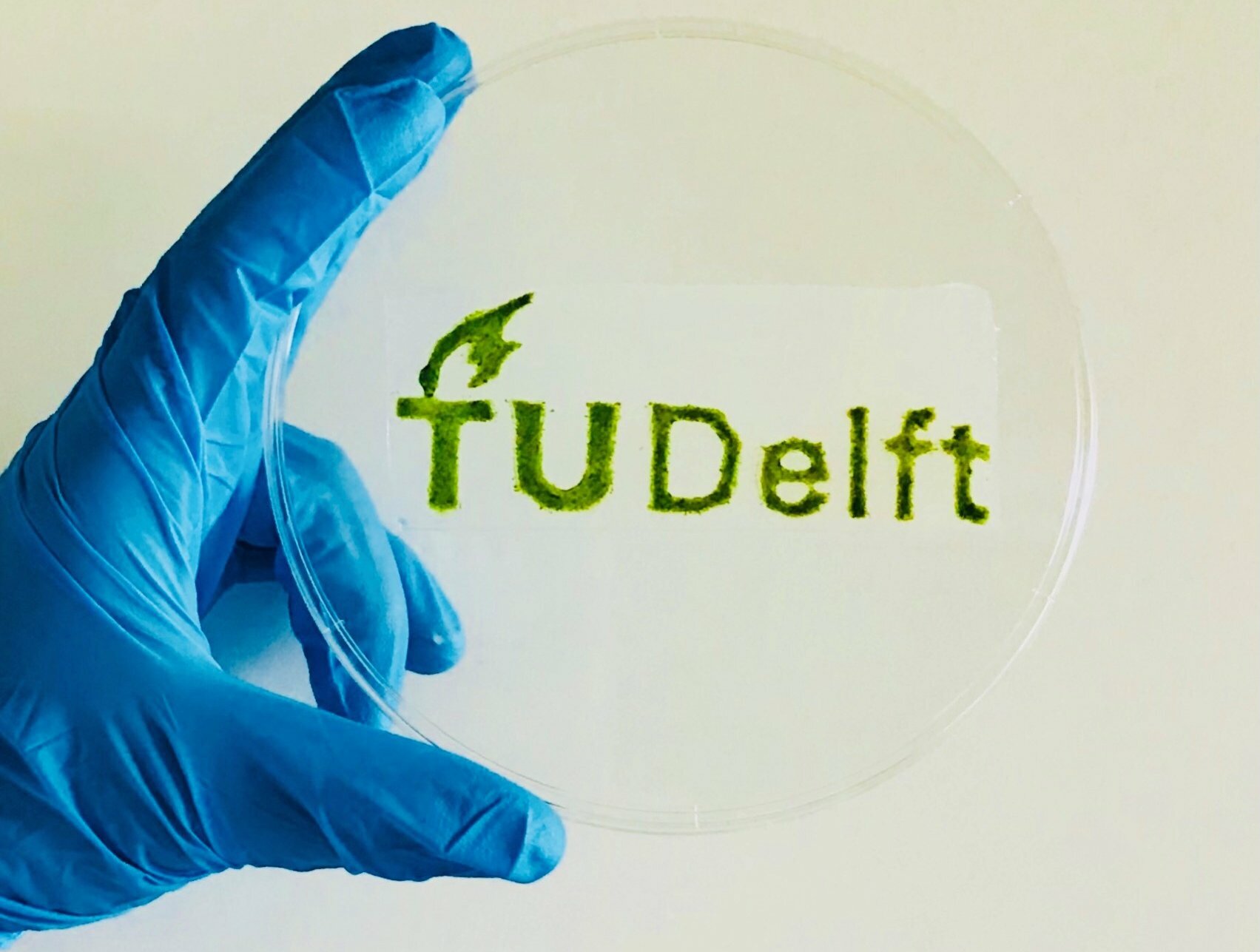Nanoscience Goes Green
by Alan S. Brown
Advances at the smallest of scales can have an impact on the climate at large

The Author
Nanoscience may involve manipulation of the smallest materials, but it could have a large impact on the biggest of all issues, climate change. This month, we look at two new battery systems, both aimed at improving on the slow-charging (and sometimes unsafe) lithium-ion batteries that now power our world. We also examine a new technology to compost plastic that leaves nothing—not even microplastics—behind, then take a peek at a living wall (or roof) printed with living algae. Finally, we finish up with an interesting way to solve a quantum computing problem—by emulating a black hole.
Cheaper aluminum batteries shine
A new aluminum-based battery achieves 10,000 error-free recharging cycles while costing less than the conventional lithium-ion batteries now used in everything from smartphones to electric vehicles. The new battery builds on research by Lynden Archer, a member of the Kavli Institute at Cornell for Nanoscale Science and dean of the school’s engineering department. He is studying low-cost batteries that are safer and more environmentally friendly than lithium-ion, which is slow to charge and prone to catching fire. His team built the new battery’s anode and cathode from two readily available elements, aluminum and carbon. Aluminum is trivalent (having three electrons in its outmost shell vs. one for lithium) and lightweight, so it can store more energy per unit mass than many other metals. While aluminum reactions can cause short circuits by reacting with other battery materials, Archer’s group found they could stop this by depositing aluminum on carbon fibers to form a bond strong enough to prevent it from moving to other parts of the battery.
Solid-state battery moves closer to reality
Factorial Energy has unveiled a 40-ampere-hour solid-state battery cell for electric vehicles and other applications. The startup was co-founded by Héctor Abruña, a member of the Kavli Institute at Cornell, and Cornell chemistry Ph.D. graduate Siyu Huang. The new battery is based on an electrolyte that is stable enough for batteries to run high voltages and energy densities without bursting into flames or growing lithium dendrites that damage and degrade lithium-metal anodes. The company claims its battery boosts driving range 20 to 50 percent without sacrificing service life. The company recently added two auto industry heavyweights, Joe Taylor, former chairman/CEO of Panasonic North America, and Dieter Zetsche, former chair of Daimler and head of Mercedes-Benz, to its team, and says several global automotive companies are testing the battery.
Truly compostable plastics
The problem with most “compostable” plastics is that they do not break down in composting facilities or landfills. They are so dense, there is no way for microbes to worm their way in to digest the polymers. Instead, they remain intact or turn into microplastics that do not break down any further and pose environmental risks. Now, Ting Xu, a member of the Kavli Energy NanoScience Institute at UC Berkeley, has found a way around the problem. She has developed a technique to “cocoon” enzymes that eat plastic and incorporate them into the plastic material itself. This is no small feat, since shaping those plastics takes place at 338* F, hot enough to destroy any enzyme. Once incorporated, the enzymes are inactive until exposed to water and moderate heat. It takes just one week to degrade 80 percent of the plastic at room temperature, and less time at higher temperatures. Xu’s technique is a boon for composters and could lead to new ways to incorporate active biomolecules into materials for sensing, decontamination, and self-healing materials.

3D printing an algae roof
Image a roof or wall made of living, photosynthetic materials tough enough to use in real-life settings. That is exactly what Marie-Eve Aubin-Tam, a member of the Kavli Institute of Nanoscience at Delft Technical University, has built by 3D printing living algae into a cellulose matrix. Cellulose is a strong yet flexible material excreted by bacteria that retains its shape even when twisted or crushed. She and her team printed living microalgae onto the cellulose, resulting in a photosynthetic system that can turn carbon dioxide and water into sugar and feed itself for several weeks. One day, she speculates, the living elements of the material could sense and respond to cues in the environment. This work showcases a new way of thinking about materials and could spark new conversations between scientists and designers.

Black holes improve quantum computing
If you have been keeping up with quantum computing, you probably know about qubits. They are quantum bits of information that hold the value of zero, one, or a superposition of zero and one at the same time. With each new qubit entangled, quantum computers gain power and algorithm-crunching ability. Now, meet qutrits. These quantum bits can hold the value of zero, one, two, or a superposition of all three at the same time. That means the size of your computer scales much quicker, so fewer bits do more work. But qutrits are prone to decoherence (when they fall out of entanglement). Irfan Siddiqi, a member of the Kavli Energy NanoScience Institute, may have found a way around the problem—by storing information as if it were in a black hole, where information is scrambled but not destroyed. It is a fascinating exploration of how to use the most advanced science to do the most advanced engineering.